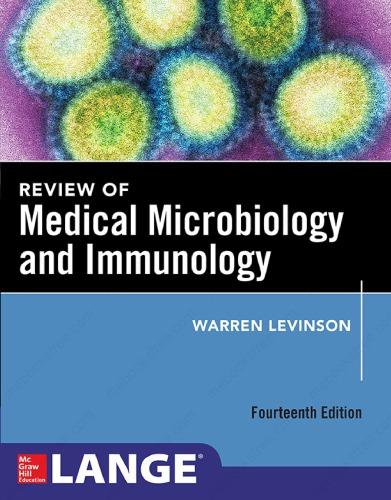Review of Medical Microbiology and Immunology, Fourteenth Edition Warren
E. Levinson
https://ebookmass.com/product/review-of-medical-microbiology-andimmunology-fourteenth-edition-warren-e-levinson/
ebookmass.com
The Last Stargazers Emily Levesque
https://ebookmass.com/product/the-last-stargazers-emily-levesque/
ebookmass.com
Up Up and Array!: Dynamic Array Formulas for Excel 365 and Beyond 1st Edition Abbott Ira Katz
https://ebookmass.com/product/up-up-and-array-dynamic-array-formulasfor-excel-365-and-beyond-1st-edition-abbott-ira-katz-2/
ebookmass.com
The Rival Romeo (The Puget Sound Pilots Book 3) Sierra Hill
https://ebookmass.com/product/the-rival-romeo-the-puget-sound-pilotsbook-3-sierra-hill/
ebookmass.com
Economic Development 13th Edition Michael P. Todaro
https://ebookmass.com/product/economic-development-13th-editionmichael-p-todaro/
ebookmass.com
Introducing Archaeology, Second Edition 2nd Edition, (Ebook PDF)
https://ebookmass.com/product/introducing-archaeology-secondedition-2nd-edition-ebook-pdf/
ebookmass.com
3251 Riverport Lane St. Louis, Missouri 63043
MOSBY’S DENTAL DRUG REFERENCE, TWELFTH EDITION ISBN: 978-0-323-48111-3 ISSN: 2211-5625
Copyright © 2018, Elsevier Inc. All rights reserved. Previous editions copyrighted 2014, 2012, 2010, and 2008.
No part of this publication may be reproduced or transmitted in any form or by any means, electronic or mechanical, including photocopying, recording, or any information storage and retrieval system, without permission in writing from the publisher. Details on how to seek permission, further information about the Publisher’s permissions policies and our arrangements with organizations such as the Copyright Clearance Center and the Copyright Licensing Agency, can be found at our website: www.elsevier.com/permissions
This book and the individual contributions contained in it are protected under copyright by the Publisher (other than as may be noted herein).
Notices
Knowledge and best practice in this field are constantly changing. As new research and experience broaden our understanding, changes in research methods, professional practices, or medical treatment may become necessary.
Practitioners and researchers must always rely on their own experience and knowledge in evaluating and using any information, methods, compounds, or experiments described herein. In using such information or methods they should be mindful of their own safety and the safety of others, including parties for whom they have a professional responsibility.
With respect to any drug or pharmaceutical products identified, readers are advised to check the most current information provided (i) on procedures featured or (ii) by the manufacturer of each product to be administered, to verify the recommended dose or formula, the method and duration of administration, and contraindications. It is the responsibility of practitioners, relying on their own experience and knowledge of their patients, to make diagnoses, to determine dosages and the best treatment for each individual patient, and to take all appropriate safety precautions.
To the fullest extent of the law, neither the Publisher nor the authors, contributors, or editors, assume any liability for any injury and/or damage to persons or property as a matter of products liability, negligence or otherwise, or from any use or operation of any methods, products, instructions, or ideas contained in the material herein.
International Standard Book Number: 978-0-323-48111-3
Executive Content Strategist: Sonya Seigafuse
Content Development Manager: Billie Sharp
Associate Content Development Specialist: Laurel Shea
Publishing Services Manager: Deepthi Unni
Senior Project Manager: Umarani Natarajan
Design Direction: Ryan Cook
Printed in the United States of America Last digit is the print number: 9 8 7 6 5 4 3 2 1
Mosby’s Dental Drug Reference, Twelfth Edition, is an easy-to-use source of current drug information for a wide spectrum of dental care providers. When it comes to providing quality patient care, all members of the dental team can rely on the twelfth edition of Mosby’s Dental Drug Reference for current, dentally relevant information presented in an easy-to-use format. As you use the book, please keep in mind the following:
• The majority of the monographs are descriptions of drugs that are utilized on an outpatient basis and are, therefore, more likely to be encountered in dental practice. Vaccines, biologicals, and medications used only intraoperatively in hospitalized patients are generally not included, and the reader is referred to other resources for this information.
• The Evolve website (http://evolve.elsevier.com/Jeske/dental/) can be consulted for updates and new information pertinent to this text.
• Several important “Dental Considerations” are relevant to all of the drugs described in the monographs, including the following:
1. The use of a prescription medication indicates the presence of a medical condition that is being managed by one or more physicians. The physical status of the patient and his or her ability to tolerate dental treatment must be determined.
2. In collaboration with the treating physician(s), the physician, not the dentist, should guide all decisions related to changes in the use of prescription drugs for medical conditions.
3. Vital signs and/or other assessments should be determined at every dental treatment visit, as appropriate and as indicated; many drugs used for systemic conditions result in adverse oral conditions, such as xerostomia. Strict attention must be paid to the prevention of negative outcomes of these conditions, particularly caries and periodontal disease; education of the patient and the patient’s family about his or her medications should be reinforced by the dental team, particularly as it relates to the prevention of oral complications of medication use.
4. This text does not constitute advice about the dental management of specific patients, each of whom must be evaluated individually using all pertinent diagnostic information, and the monographs contained in this book do not constitute full prescribing information for the drugs.
In the production of the book, we have endeavored to make it as current and relevant as possible while emphasizing the busy oral health care provider’s need for rapid access and dentally relevant information. On behalf of the Editor-inChief and Elsevier, we proudly thank our reviewers, Ruth Fearing Tornwall, RDH, MS, Lamar Institute of Technology; Lincoln Edwards, DDS, PhD, University of Texas Health Science Center; and Demetra Logothetis, RDH, MS, University of New Mexico, and our monograph content contributors, Meera K. Shah, PharmD, AAHIVP, and Thomas Viola, RPh, CCP, for their expertise and contributions. Finally, this edition is respectfully dedicated to the teachers and practitioners of dentistry, dental hygiene, and dental assisting around the world whose application of the book for students and patients continues to inspire our work.
Monoclonal Antibodies and Other Biologic Drugs
Summary:
Monoclonal antibodies, anti–tumor necrosis factor (anti-TNF) agents, and other preparations are now in widespread use as immune modulators in the management of autoimmune disorders and account for a very high proportion of drug sales in the United States. Although limitations on their use include the need for injection of many of these agents, they have had a significant impact on the treatment of several important diseases, particularly rheumatoid arthritis, Crohn’s disease, and more severe forms of psoriasis. They are generally large proteins that can be manufactured via recombinant DNA methodologies. The types of agents described in this section may be recognized by the suffixes of their official (“generic”) names, (e.g., “-mab” indicates “monoclonal antibody,” “-ib” indicates “inhibitor,” etc.).
Classification:
T-cell modulators: e.g., abatacept (Orencia®)
B-cell cytotoxic agents: e.g., rituximab (Rituxan®)
IL-1 (interleukin-1) blockers: e.g., anakinra (Kineret®), rilonacept (Arcalyst®), canakinumab (Ilaris®)
Anti-IL-6 (interleukin-6) receptor antibodies: e.g., tocilizumab (Actemra®)
Janus kinase (JAK) inhibitors: e.g., tofacitinib (Xeljanz®)
TNF-α blockers: e.g., adalimumab (Humira®), certolizumab (Cimzia®), etanercept (Enbrel®), golimumab (Simponi®), infliximab (Remicade®)
DENTAL CONSIDERATIONS FOR MONOCLONAL ANTIBODIES/BIOLOGICALLY
TARGETED AGENTS
General:
• Consult prescribing information for specific drug interactions.
• Patients taking biologic agents are being treated for serious systemic autoimmune disorders, which may require postponement or modification of dental care.
• Patients are at increased risk of infections because of the immunosuppressive effects of biologic agents; patients should be monitored accordingly.
• Screen for latent or active tuberculosis and opportunistic infections.
• Consult physician to assess disease status and ability of patient to tolerate dental procedures.
• Many biologic agents must be injected; injection site discomfort and acute symptoms may occur following injection (nausea, diarrhea).
Monoclonal Antibodies Approved for Use in the United States
Official Name
Trade Name(s)
Primary Indications/Uses
Abciximab ReoPro Adjunct for prevention of thromboembolism
Adalimumab Humira Rheumatoid arthritis
Alemtuzumab Campath Chronic lymphocytic leukemia
Basiliximab Simulect Anti-rejection (for renal transplantation)
Bevacizumab Avastin Metastatic colorectal and other tumors
Canakinumab Ilaris Cryopyrin-associated periodic syndromes (Continued)
DENTAL CONSIDERATIONS
General:
• Examine for oral manifestation of opportunistic infection.
• Patient on chronic drug therapy may rarely have symptoms of blood dyscrasias, which include infection, bleeding, and poor healing.
• Avoid dental light in patient’s eyes; offer dark glasses for patient comfort.
• Place on frequent recall because of oral side effects.
• Consider semisupine chair position for patient comfort if GI side effects occur.
Consultations:
• In a patient with symptoms of blood dyscrasias, request a medical consultation for blood studies and postpone treatment until normal values are reestablished.
• Medical consultation may be required to assess disease control.
Teach Patient/Family to:
• Encourage effective oral hygiene to prevent soft tissue inflammation.
• Prevent trauma when using oral hygiene aids.
• Be alert for the possibility of secondary oral infection and the need to see dentist immediately if signs of infection occur.
MECHANISM OF ACTION
A luteinizing hormone-releasing hormone (LHRH) antagonist that inhibits gonadotropin and androgen production by blocking gonadotropin releasing-hormone receptors in the pituitary.
Therapeutic Effect: Suppresses luteinizing hormone, folliclestimulating hormone secretion, reducing the secretion of testosterone by the testes.
USES
Treatment of breast cancer, endometrium, and prostate
PHARMACOKINETICS
Slowly absorbed following intramuscular administration. Distributed extensively. Protein binding: 96%–99%. Half-life: 13.2 days.
INDICATIONS
AND DOSAGES 4 Prostate Cancer IM
Adults, Elderly. 100 mg on days 1, 15, and 29 and every 4 wk thereafter. Treatment failure can be detected by obtaining serum testosterone concentration prior to abarelix administration, day 19 and every 8 wk thereafter.
SIDE EFFECTS/ADVERSE REACTIONS
Frequent
Hot flashes, sleep disturbances, breast enlargement
Occasional
CATEGORY AND SCHEDULE
Pregnancy Risk Category: X
Drug Class: Antineoplastic
Breast pain, nipple tenderness, back pain, constipation, peripheral edema, dizziness, upper respiratory tract infection, diarrhea
Rare
Fatigue, nausea, dysuria, micturition frequency, urinary retention, UTI
PRECAUTIONS AND CONTRAINDICATIONS
This drug should not be used in women and children.
DRUG INTERACTIONS OF CONCERN TO DENTISTRY
• None reported.
SERIOUS REACTIONS
! Immediate-onset systemic allergic reaction characterized by hypotension, urticaria, pruritus, periorbital and/or circumoral edema, shortness of breath, wheezing, and syncope may occur.
! Prolongation of the QT interval may occur. Tightening of throat, tongue swelling, wheezing, shortness of breath, and low blood pressure occur rarely.
DENTAL CONSIDERATIONS
General:
• If additional analgesia is required for dental pain, consider alternative analgesics (NSAIDs) in patients taking opioids for acute or chronic pain.
• This drug may be used in the hospital or on an outpatient basis. Confirm the patient’s disease and treatment status.
Consultations:
• Medical consultation may be required to assess disease control and patient’s ability to tolerate stress.
Teach Patient/Family to:
• Encourage effective oral hygiene to prevent soft tissue inflammation.
• Prevent trauma when using oral hygiene aids.
• Update health and medication history if physician makes any changes in evaluation or drug
regimens; include OTC, herbal, and nonherbal remedies in the update.
abatacept
ah-bat′-ah-cept (Orencia)
CATEGORY AND SCHEDULE
Pregnancy Risk Category: C
Drug Class: Antirheumatic, disease modifying
MECHANISM OF ACTION
Selective costimulation modulator; inhibits T-cell activation by binding to CD80 and CD86 on antigen presenting cells, thus blocking the required CD28 interaction and inhibiting autoimmune T-cell activation.
USES
Rheumatoid arthritis (RA), second-line reduction of signs and symptoms of moderate-to-severe active RA, monotherapy or in combination with other diseasemodifying antirheumatic drugs (DMARDs) (e.g., methotrexate). Juvenile idiopathic arthritis, moderate-to-severe active.
PHARMACOKINETICS
Absorbed completely following parenteral administration. Distribution: 0.02–0.13 L/kg. Half-life: 13 days (8–25 days).
INDICATIONS AND DOSAGES
4 Rheumatoid Arthritis (moderate to severe) in patients who have had an inadequate response to one or more disease-modifying antirheumatic drugs
DRUG INTERACTIONS OF CONCERN TO DENTISTRY
• Increased risk of bleeding: drugs that interfere with coagulation or platelet function, such as NSAIDs and aspirin.
SERIOUS REACTIONS
! Major bleeding complications may occur. If complications occur, stop the infusion immediately.
! Hypersensitivity reaction may occur.
! Atrial fibrillation or flutter, pulmonary edema, and complete atrioventricular block occur occasionally.
DENTAL CONSIDERATIONS
General:
• Monitor vital signs at every appointment because of cardiovascular side effects.
• For use in hospitals or emergency rooms.
• Review patient’s medical and drug history.
• Provide palliative emergency dental care only during drug use.
• Patients may be at risk of bleeding; check for oral signs. Consultations:
• Medical consultation may be required to assess disease control and patient’s ability to tolerate stress.
• Medical consultation should include routine blood counts including platelet counts and bleeding time.
• Avoid products that affect platelet function, such as aspirin and NSAIDs.
Teach Patient/Family to:
• Encourage effective oral hygiene to prevent soft tissue inflammation.
• Prevent trauma when using oral hygiene aids.
• Report oral lesions, soreness, or bleeding to dentist.
• Update health and medication history if physician makes any changes in evaluation or drug regimens; include OTC, herbal, and nonherbal remedies in the update.
• Use soft toothbrush to reduce risk of bleeding.
CATEGORY AND SCHEDULE
Hemostatic
Drug Class: Hemostatic, purified gelatin sponge
MECHANISM OF ACTION
Absorbs blood, provides area for clot formation
USES
Hemostasis adjunct in dental surgery
PHARMACOKINETICS
IMPLANT: Absorbed in 4–6 wk
INDICATIONS AND DOSAGES
4 Dental Use
Adult. Top can be applied dry or moistened with normal saline solution; blot on sterile gauze to remove excess solution, shape to fit with light finger compression; hold pressure until dry. Apply to bleeding surfaces. Material may be cut to appropriate size or secured in extraction sites with sutures.
SIDE EFFECTS/ADVERSE REACTIONS
None reported
PRECAUTIONS AND CONTRAINDICATIONS
Hypersensitivity, frank infection
Caution:
Avoid use in presence of infection, potential nidus of infection, do not resterilize product.
DENTAL CONSIDERATIONS
Teach Patient/Family to:
• Immediately report any sign of infection to the dentist.
INDICATIONS AND DOSAGES
4 Maintenance of Alcohol Abstinence
PO
Adult. 666 mg 3 times a day with or without food.
SIDE EFFECTS/ADVERSE REACTIONS
Oral: Dry mouth
CNS: Headache, somnolence, decreased libido, amnesia, abnormal thinking, tremor
CV: Palpitation, syncope, vasodilation, changes in B/P
GI: Vomiting, dyspepsia, constipation, increased appetite
RESP: Rhinitis, cough, dyspnea, pharyngitis, bronchitis
GU: Impotence
CATEGORY AND SCHEDULE
Pregnancy Risk Category: C
Drug Class: Alcohol-abuse deterrent
MECHANISM OF ACTIONS
Actual mechanism unknown; may facilitate balance between GABA and glutamate neurotransmitter systems in the CNS to decrease alcohol craving.
USES
Alcohol-abuse deterrent
PHARMACOKINETICS
Partially absorbed from GI tract, steady-state levels reached within 5 days of dosing. Protein binding negligible. Half-life: 20–33 hr. Does not undergo metabolism; excreted unchanged in urine.
EENT: Abnormal vision, taste alterations
INTEG: Rash
MS: Myalgia, arthralgia
SYST: Back pain, infection, flu syndrome, chest pain, chills, attempts at suicide (see Precautions)
PRECAUTIONS AND CONTRAINDICATIONS
Hypersensitivity, severe renal impairment
Caution:
Renal impairment, depression/ suicidal tendency
DRUG INTERACTIONS OF CONCERN TO DENTISTRY
• None reported
DENTAL CONSIDERATIONS
General:
• Assess salivary flow as a factor in caries, periodontal disease, and candidiasis.
• After supine positioning, allow patient to sit upright for 2 min to avoid orthostatic hypotension.
active metabolite. Eliminated via bile and excretion into GI tract through intestinal wall, as well as partly excreted in urine. Removed by hemodialysis. Half-life: 3–4 hr (parent drug); 8–13 hr (metabolite).
INDICATIONS AND DOSAGES
4 Mild-to-Moderate Hypertension
PO
Adults. Initially, 400 mg/day in 2 divided doses. Maintenance 400–800 mg/day. Maximum: 1200 mg/day in 2 divided doses.
4 Ventricular Arrhythmias
PO
Adults. Initially, 200 mg twice a day. Increase gradually to 600–1200 mg/ day in 2 divided doses. Elderly. Initially, 200–400 mg/day Maximum: 800 mg/day
4 Dosage in Renal Impairment
Dosage is modified based on creatinine clearance.
Creatinine Clearance % of Usual Dosage
Less than 50 ml/min 50
Less than 25 ml/min 25
SIDE EFFECTS/ADVERSE REACTIONS
Frequent
Hypotension manifested as dizziness, nausea, diaphoresis, headache, cold extremities, fatigue, constipation, or diarrhea
Occasional
Insomnia, urinary frequency, impotence or decreased libido
Rare
Rash, arthralgia, myalgia, confusion (especially in the elderly), altered taste
PRECAUTIONS AND CONTRAINDICATIONS
Hypersensitivity to acebutolol or any component of the formulation
Caution:
Cardiogenic shock
Heart block greater than first degree
Overt heart failure
Severe bradycardia
Caution use in patients with bronchospastic disease, diabetes, hyperthyroidism, impaired renal or hepatic function, inadequate cardiac function, or peripheral vascular disease.
DRUG INTERACTIONS OF CONCERN TO DENTISTRY
• Diuretics, other antihypertensives: May increase hypotensive effect of acebutolol.
• Sympathomimetics, xanthines: May antagonize the effects and reduce bronchodilation.
• Oral hypoglycemics and insulin: May mask symptoms of hypoglycemia and prolong hypoglycemic effect of insulin and oral hypoglycemics.
• Catecholamine-depleting drugs (e.g., reserpine): May have additive effect. Monitor for bradycardia or hypotension.
• NSAIDs: May reduce the antihypertensive effect of acebutolol.
• Digoxin: May cause serious bradycardia.
• Calcium channel blockers (verapamil, diltiazem): May cause hypotension and bradycardia.
• Class I antiarrhythmic drugs: May increase atrial conduction time and negative inotropic effects.
SERIOUS REACTIONS
! Overdose may produce profound bradycardia and hypotension.
! Abrupt withdrawal may result in diaphoresis, palpitations, headache, rebound hypertension, and tremors.
! Acebutolol administration may precipitate CHF or MI in patients with heart disease; thyroid storm in those with thyrotoxicosis; or peripheral ischemia in those with existing peripheral vascular disease.
! Hypoglycemia may occur in patients with previously controlled diabetes.
! Signs of thrombocytopenia, such as unusual bleeding or bruising, occur rarely.
DENTAL CONSIDERATIONS
General:
• Monitor vital signs at every appointment because of cardiovascular side effects.
• After supine positioning, have patient sit upright for at least 2 min before standing to avoid orthostatic hypotension.
• Assess salivary flow as a factor in caries, periodontal disease, and candidiasis.
• Limit use of sodium-containing products, such as saline IV fluids, for those patients with dietary salt restriction.
• Stress from dental procedures may compromise cardiovascular function; determine patient risk. Consultations:
• Medical consultation may be required to assess disease control.
Teach Patient/Family to:
• Report oral lesions, soreness, or bleeding to dentist.
• When chronic dry mouth occurs, advise patient to:
• Avoid mouth rinses with high alcohol content because of drying effects.
• Use daily home fluoride products for anticaries effect.
• Use sugarless gum, frequent sips of water, or saliva substitutes. acetaminophen ah-seet-ah-min′-oh-fen (Abenol[CAN], ApoAcetaminophen[CAN], Atasol[CAN], Dymadon[AUS], Feverall, Panadol[AUS], Panamax[AUS], Paralgin[AUS], Setamol[AUS], Tempra, Tylenol) Do not confuse with Fiorinal, Hycodan, Indocin, Percodan, or Tuinal.
CATEGORY AND SCHEDULE
Pregnancy Risk Category: B
Drug Class: Nonnarcotic analgesic
MECHANISM OF ACTION
A central analgesic whose exact mechanism is unknown but appears to inhibit prostaglandin synthesis in the CNS and, to a lesser extent, block pain impulses through peripheral action. Acetaminophen acts centrally on hypothalamic heat-regulating center, producing peripheral vasodilation (heat loss, skin erythema, sweating). Therapeutic Effect: Results in antipyresis. Produces analgesic effect.
USES
Mild-to-moderate pain, fever; also used in combination with other ingredients, including opioids.
PHARMACOKINETICS
Route
body tissues including erythrocytes, kidneys, and blood-brain barrier. Not metabolized. Excreted unchanged in urine. Removed by hemodialysis. Half-life: 2.4–5.8 hr.
INDICATIONS AND DOSAGES
4 Glaucoma PO
Adults. 250 mg 1–4 times a day. Extended-Release: 500 mg 1–2 times a day usually given in morning and evening.
4 Secondary Glaucoma, Preoperative Treatment of Acute Congestive Glaucoma PO/IV
Adults. 250 mg q4h, 250 mg q12h; or 500 mg, then 125–250 mg q4h. PO
Children. 10–15 mg/kg/day in divided doses. IV Children. 5–10 mg/kg q6h.
4 Edema IV
Adults. 25–375 mg once daily. Children. 5 mg/kg or 150 mg/m2 once daily.
4 Epilepsy PO
Adults, Children. 375–1000 mg/day in 1–4 divided doses.
4 Acute Mountain Sickness PO
Adults. 500–1000 mg/day in divided doses. If possible, begin 24–48 hr before ascent; continue at least 48 hr at high altitude.
4 Usual Elderly Dosage PO
Initially, 250 mg 2 times a day; use lowest effective dose.
4 Dosage in Renal Impairment
Creatinine Clearance Dosage Interval
10–50 ml/min q12h
Less than 10 ml/min Avoid use
SIDE EFFECTS/ADVERSE REACTIONS
Frequent
Unusually tired/weak, diarrhea, increased urination/frequency, decreased appetite/weight, altered taste (metallic), nausea, vomiting, numbness in extremities, lips, mouth
Occasional
Depression, drowsiness
Rare
Headache, photosensitivity, confusion, tinnitus, severe muscle weakness, loss of taste
PRECAUTIONS AND CONTRAINDICATIONS
Severe renal disease, adrenal insufficiency, hypochloremic acidosis, hypersensitivity to acetazolamide, to any component of the formulation, or to sulfonamides
Caution:
Hypercalciuria, chronic use of oral sulfonylureas has been associated with increased risk of cardiovascular mortality; risk is controversial.
DRUG INTERACTIONS OF CONCERN TO DENTISTRY
• Toxicity: salicylates (large doses)
• Hypokalemia: corticosteroids (systemic use)
• Crystalluria: ciprofloxacin
SERIOUS REACTIONS
! Long-term therapy may result in acidotic state.
! Nephrotoxicity/hepatotoxicity occurs occasionally, manifested as dark urine/stools, pain in lower back, jaundice, dysuria, crystalluria, renal colic/calculi.
! Bone marrow depression may be manifested as aplastic anemia, thrombocytopenia, thrombocytopenic purpura, leukopenia, agranulocytosis, hemolytic anemia.
DENTAL CONSIDERATIONS
General:
• Patients on chronic drug therapy may rarely have symptoms of blood dyscrasias, which can include infection, bleeding, and poor healing.
• Assess salivary flow as a factor in caries, periodontal disease, and candidiasis.
• Avoid drugs that may exacerbate glaucoma (e.g., anticholinergics).
Consultations:
• In a patient with symptoms of blood dyscrasias, request a medical consultation for blood studies and postpone dental treatment until normal values are reestablished.
• Consultation may be required to assess disease control.
Teach Patient/Family to:
• Encourage effective oral hygiene to prevent soft tissue inflammation.
• Prevent injury when using oral hygiene aids.
• When chronic dry mouth occurs, advise patient to:
• Avoid mouth rinses with high alcohol content because of drying effects.
• Use daily home fluoride products for anticaries effect.
• Use sugarless gum, frequent sips of water, or saliva substitutes.
acetohexamide ah-seet-oh-hex′-ah-mide (Dymelor)
Do not confuse with acetazolamide.
CATEGORY AND SCHEDULE
Pregnancy Risk Category: D
Drug Class: Sulfonylurea (first generation), antidiabetic
MECHANISM OF ACTION
An intermediate-acting sulfonylurea that promotes the release of insulin from beta cells of pancreas, increases insulin sensitivity at peripheral sites.
Therapeutic Effect: Lowers blood glucose concentration.
USES
Treatment of stable adult-onset diabetes mellitus (type 2)
PHARMACOKINETICS
Well absorbed from the GI tract. Protein binding: 65%–90%. Metabolized in liver. Excreted in urine. Not removed by hemodialysis. Half-life: 1.3 hr.
INDICATIONS
AND DOSAGES
4 Diabetes Mellitus PO
Adults, Elderly. Initially, 250 mg/ day. Adjust dosage in 250- to 500-mg increments at intervals of 5–7 days. Maximum daily dose: 1.5 g. Elderly patients may be more sensitive and should be started at a lower dosage initially.






